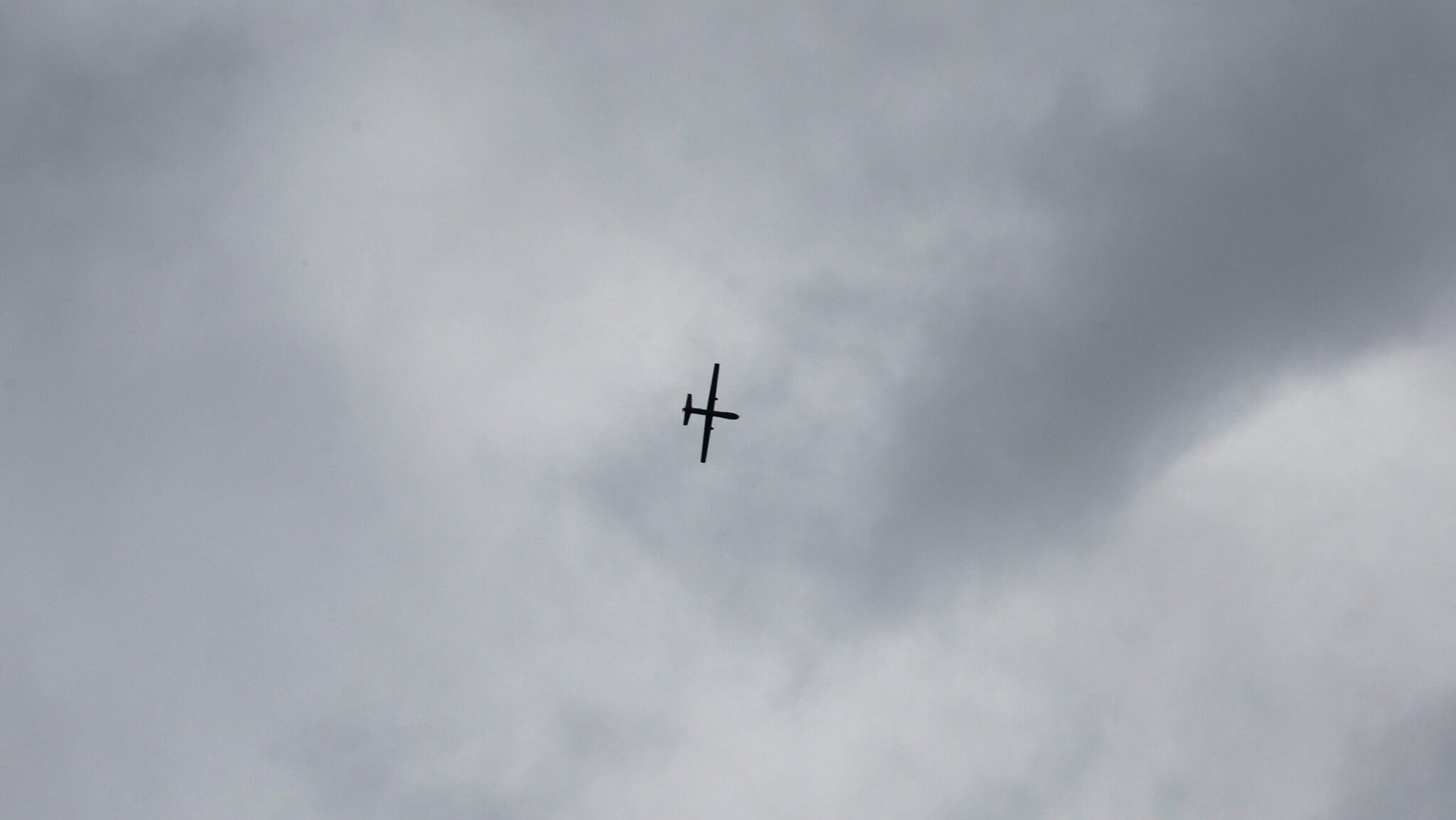Since the Hamas attack on Israel and the ensuing military campaign in Gaza, Israel has found itself the target of missiles and drones fired by Iranian-backed groups from various points in the Middle East. While there has not been a full-scale escalation from groups like Hezbollah in Lebanon, the attacks, many of which have been intercepted, have served as a warning of what Israel’s enemies in the region have at their disposal.
One particular incident marked a notable departure from previous attacks on Israel and will be causing increased concern for the country’s security officials. On November 9, a drone launched from Syria struck a school in the southern Israeli city of Eilat. The drone managed to hit a target more than 400 kilometers away from the nearest Syrian territory. Previous attacks on Israel from Syria have typically involved mortar shelling across the border confined to unpopulated areas.
Beyond its remarkable long-distance reach, the drone’s capacity to fly undetected and execute a precise strike suggests the involvement of a well-trained operator. The message conveyed by the attack is equally noteworthy –it demonstrates the capability to target any location in Israel from Syria. Eilat is Israel’s southernmost city and its only port on the country’s sliver of Red Sea coastline. The questions that loom large are: Who was responsible for the attack? and how did they manage to reach the target without triggering alarms from Israel’s sophisticated defense systems?
The Israeli military said the drone crashed into the school while about 40 students were in the basement. No serious injuries were reported.
The next day, the Israeli army said it had responded by targeting the organization in Syria responsible for launching the drone. However, the statement did not identity the group, and failed to give details about the target.
Initially, there were suspicions that the attack originated in Yemen, after several recent attempted strikes on Israel carried out by the Iran-backed Houthis. Examinations of the drone fragments indicated that it was most likely an Iranian-made Shahed-101 or a similar model. The Shahed-101 boasts a range of up to 700 kilometers. Given that the distance from the Yemeni border to Eilat is nearly 2,000 kilometers, it became clear that the drone must have been launched from a location closer to Israel.Â
Two primary theories continue to circulate regarding the launch location and who was operating the drone. The prevailing assumption is that the drone was launched from southern Syria by Hezbollah, or a group linked to it, which has had a large presence there since the Lebanese group backed Bashar Al Assad in the Syrian civil war.
Hezbollah announced that seven of its fighters were killed on the day of the Eilat drone attack, without disclosing the location of their deaths. However, reports citing a Hezbollah official, among others, acknowledging that they were killed in Syria, added to suspicions that the seven died in Israel’s retaliatory airstrike.
If these reports prove accurate, it would tie in with Israeli concerns over Hezbollah’s drone capacity and substantial influence in southern Syria. The absence of official acknowledgment from either party may stem from a shared interest in preventing further escalations.
However, there is a second theory as to who was responsible. Israeli news website Walla identified the elite Iranian-backed Imam Hussein Division as responsible for the attack. The group, also known as the Imam Hussein Brigades, was established by the Islamic Revolutionary Guard Corps in Syria in 2016 and armed with Iranian-made drones and surface-to-surface and surface-to-air missiles.Â
The media outlet, however, did not specify where the attack originated from. Military experts told this writer that while southern Syria remains a potential location, northeast Syria – Imam Hussein’s stronghold – is considered a more likely launching point. The considerable distance of northeast Syria from the border with Israel renders it a more strategic launch spot for the drone compared to the southern part of Syria, which is subject to closer monitoring by Israel.
Regardless of which account of the November 9 attack is most accurate, both suggest the potential for drone strikes from different parts of Syria. The trajectory of the drone is an equally crucial detail. All reports say the drone approached Eilat from the direction of Jordan, covering hundreds of kilometers across the kingdom’s airspace.
The same military experts said the choice of Jordanian airspace for the drone’s path was because Israel sees its border with Jordan as relatively low risk. Consequently, Tel Aviv directs its sensors, radars, and patrol aircraft to regions where the risk of attacks is deemed higher, such as southern Syria. The rugged terrain along the Jordan-Israel border near Eilat adds complexity to drone detection and provides cover for the devices approaching from a distance at low altitudes.
Moreover, the drone’s distinctive features facilitated its discreet flight to the target without triggering Israel’s alarms. It flies at slow speed, low altitude, can be programmed to deviate from a straight path, and has a compact size.
Amid the conflict in Gaza, the drone attack from Syria is unlikely to be the last. The Israeli military is expected to bolster security measures along the Jordanian border. However, the technical challenges, Israel’s engagement on various fronts, and the capability of Iranian-backed groups to deploy multiple and more advanced drones diminish the likelihood of Israel completely neutralizing the threat.
Hence, a diplomatic resolution for Gaza is the sole guaranteed means to prevent further escalation against Israel, domestically and regionally.
Dr Haid Haid is a Syrian columnist and a consulting associate fellow of Chatham House’s Middle East and North Africa program. X: @HaidHaid22






